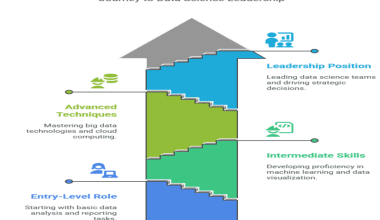Summary: This blog presents 24 essential programming interview questions for 2025, covering basics to advanced topics. Each question includes a clear answer to help candidates prepare effectively and confidently for technical interviews.
Introduction
As the tech hiring landscape rebounds with a 40% year-on-year increase in interview volumes at major companies, preparing for programming interviews in 2025 has never been more critical. With over 60% of software engineers finding coding interviews the toughest hurdle to landing a job, mastering the right questions is essential.
Python, JavaScript, and Java remain dominant languages, reflecting industry demand. This blog presents the top 24 programming interview questions for 2025, complete with expert answers and insights, designed to help candidates navigate increasingly rigorous and competitive technical interviews effectively.
Key Takeaways
- Master foundational programming concepts to ace interviews.
- Understand data structures and algorithms deeply.
- Practice coding problems regularly for speed and accuracy.
- Learn to analyze time and space complexity.
- Prepare for both conceptual and coding challenges.
Top 24 Programming Interview Questions and Answers
Preparing for programming interviews in 2025 requires mastering a mix of fundamental concepts, coding skills, and problem-solving techniques. These top 24 programming interview questions you are likely to encounter, along with clear, concise answers to help you succeed.
1. What is a Variable in Programming?
A variable is a named storage location in memory that holds data which can be changed during program execution. Variables have types that define the kind of data they store, such as integers, floats, or strings.
2. Explain Data Types with Examples
Data types specify the kind of data a variable can hold. Examples include:
- Integer: int x = 10;
- Float: float y = 3.14;
- String: String name = “Alice”;
Each type supports specific operations and uses.
3. Difference Between Compiled and Interpreted Languages
Compiled languages (e.g., C, C++) translate code into machine language before execution, offering faster runtime performance. Interpreted languages (e.g., Python, JavaScript) translate code at runtime, providing flexibility but slower execution.
4. What is a Linked List?
A linked list is a linear data structure where each element (node) contains data and a reference (pointer) to the next node. It allows efficient insertion and deletion but slower access compared to arrays.
5. Explain Arrays and Their Uses
Arrays are fixed-size collections of elements of the same type stored in contiguous memory locations. They allow fast access using indices but have a fixed size.
6. What is Recursion?
Recursion is a programming technique where a function calls itself to solve smaller instances of a problem until reaching a base case. It’s useful for problems like tree traversal and factorial calculation.
7. How Does a Hash Table Work?
A hash table stores key-value pairs and uses a hash function to compute an index into an array, where the value is stored. It offers average O(1) time complexity for search, insert, and delete operations.
8. What is Big O Notation?
Big O notation describes the upper bound of an algorithm’s running time or space requirements in terms of input size, helping analyze efficiency and scalability.
9. Explain the Difference Between Stack and Queue
- Stack: Last-In-First-Out (LIFO) data structure where the most recently added element is removed first.
- Queue: First-In-First-Out (FIFO) data structure where the earliest added element is removed first.
10. What is Object-Oriented Programming (OOP)?
OOP is a programming paradigm based on objects containing data (attributes) and behavior (methods). Key principles include encapsulation, inheritance, polymorphism, and abstraction.
11. Describe the Concept of Inheritance in OOP
Inheritance allows a class (child) to acquire properties and behaviors from another class (parent), promoting code reuse and hierarchical relationships.
12. What is Polymorphism?
Polymorphism enables objects of different classes to be treated as instances of a common superclass, typically through method overriding or interface implementation.
13. Explain Exception Handling
Exception handling manages runtime errors using constructs like try, catch, and finally blocks, allowing programs to continue or fail gracefully.
14. What is a Binary Tree?
A binary tree is a hierarchical data structure where each node has at most two children, commonly referred to as left and right child.
15. What is Dynamic Programming?
Dynamic programming is an optimization technique that solves problems by breaking them down into overlapping subproblems and storing results to avoid redundant computations.
16. How Do You Reverse a String in Code?
Example in Python:
python
def reverse_string(s):
return s[::-1]
This slices the string from end to start.
17. How to Swap Two Numbers Without a Temporary Variable?
Example in Java:
java
a = a + b;
b = a – b;
a = a – b;
This swaps values using arithmetic operations.
18. What is a Graph?
A graph is a collection of nodes (vertices) connected by edges. Graphs can be directed or undirected and are used to model networks.
19. Explain Depth-First Search (DFS) and Breadth-First Search (BFS)
- DFS explores as far as possible along each branch before backtracking.
- BFS explores all neighbors at the current depth before moving deeper.
20. What is a Deadlock?
Deadlock is a situation in concurrent programming where two or more processes are unable to proceed because each is waiting for the other to release resources.
21. What is a Thread?
A thread is the smallest unit of execution within a process, enabling concurrent execution of code segments.
22. Explain the Concept of Immutable Objects
Immutable objects cannot be modified after creation. Examples include strings in Java and tuples in Python.
23. What is Memoization?
Memoization is a technique to speed up recursive algorithms by caching previously computed results.
24. How Do You Detect a Cycle in a Linked List?
Use Floyd’s Cycle-Finding Algorithm (Tortoise and Hare): two pointers move at different speeds; if they meet, a cycle exists.
Conclusion
Mastering these 24 programming interview questions and their answers will significantly boost your confidence and readiness for 2025 coding interviews. Combine conceptual knowledge with consistent practice, and you’ll be well-prepared to tackle technical challenges and impress interviewers.




